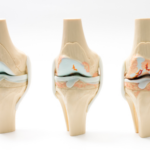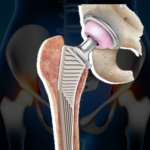Pelvis and acetabulum surgery is a complex and specialized procedure performed to restore stability and function to the pelvic region. In this blog, we will explore the importance of the pelvis and acetabulum, common conditions requiring surgical intervention, the surgical techniques involved, and the recovery process associated with these intricate surgeries.
Understanding the Pelvis and Acetabulum:
The pelvis is a bony structure located at the base of the spine, comprising three bones: the ilium, ischium, and pubis. The acetabulum is a concave socket within the pelvis that forms the hip joint. These structures provide stability and support to the lower body and are crucial for everyday activities such as walking and sitting.
Conditions Requiring Surgery:
- Acetabular Fractures: Severe trauma, such as a high-impact accident or a fall from a significant height, can cause fractures in the acetabulum. These fractures may disrupt the stability of the hip joint and require surgical intervention to realign the bones and promote proper healing.
- Pelvic Ring Fractures: Pelvic ring fractures occur when there is a break in the bony ring formed by the pelvic bones. These fractures can result from high-energy accidents, such as motor vehicle collisions or falls from significant heights. Surgery is often necessary to stabilize the pelvic ring, restore alignment, and prevent long-term complications.
- Acetabular Dysplasia: Acetabular dysplasia is a condition where the hip socket is abnormally shallow or misaligned. This can lead to hip instability, pain, and increased risk of hip dislocation. Surgical procedures, such as acetabular reorientation or osteotomy, may be performed to correct the alignment and improve joint function.
- Osteoarthritis of the Hip: Osteoarthritis is a degenerative condition that can affect the hip joint, causing pain, stiffness, and reduced mobility. In some cases, when conservative treatments are ineffective, surgical options such as hip replacement or resurfacing may be considered to alleviate pain and restore joint function.
Surgical Techniques:
- Open Reduction and Internal Fixation (ORIF): This technique involves making an incision to access the fractured bones, realigning them into their proper position, and using specialized implants such as screws, plates, or rods to stabilize the fracture.
- Acetabular Reconstruction: In cases of significant acetabular damage, reconstructive procedures may be performed. This involves reshaping the acetabulum, using bone grafts or specialized implants to restore stability and function to the hip joint.
- Total Hip Replacement: In cases of severe arthritis or irreversible damage to the hip joint, a total hip replacement may be necessary. This procedure involves removing the damaged acetabulum and femoral head, and replacing them with artificial components to create a new hip joint.
Recovery Process:
The recovery process following pelvis and acetabulum surgery can be lengthy and requires a multidisciplinary approach involving pain management, physical therapy, and close monitoring. Here are some key aspects of the recovery process:
- Hospital Stay: Depending on the complexity of the surgery, the patient may need to stay in the hospital for several days or longer. During this time, pain medication, wound care, and physical therapy will be administered.
- Rehabilitation: Physical therapy is a crucial component of the recovery process. It helps improve strength, flexibility, and mobility. The therapist will design a personalized exercise program to gradually increase weight-bearing activities and enhance functional abilities.
- Assistive Devices: Crutches, walkers, or other assistive devices may be necessary during the early stages of recovery to support weight and facilitate mobility. The use of these devices will be gradually reduced as strength and stability improve.
- Follow-up Care: Regular follow-up appointments with the surgeon will be scheduled to monitor the progress of healing and address any concerns or complications that may arise.
Conclusion:
Pelvis and acetabulum surgery is a complex procedure aimed at restoring stability and function to the hip joint and pelvic region. Whether it’s treating fractures, dysplasia, or advanced arthritis, surgical intervention can significantly improve patients’ quality of life. The recovery process requires patience, adherence to rehabilitation protocols, and close collaboration with healthcare professionals. By following the recommended postoperative care, individuals can regain mobility and return to an active lifestyle. If you are facing pelvic or acetabular issues, consult with an experienced orthopedic surgeon to discuss the most appropriate treatment plan for your specific condition.




